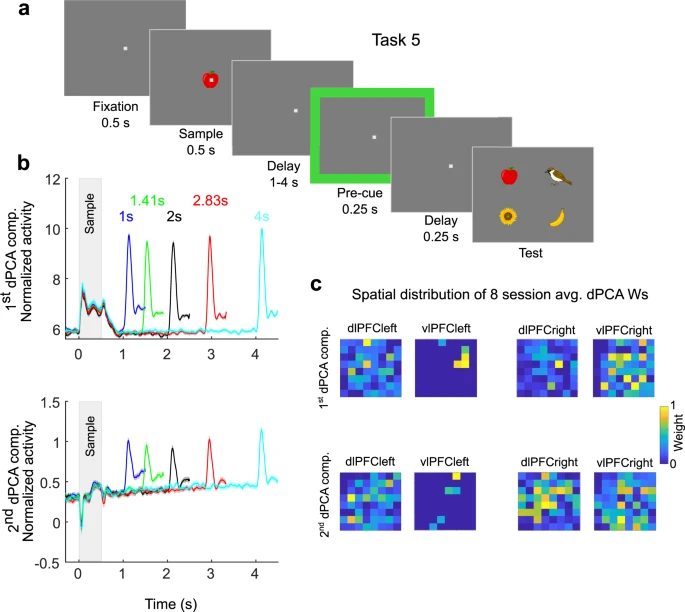MIT News March 30, 2023
Working memory allows us to remember and selectively control a limited set of items. Neural evidence suggests that working memory is achieved by interactions between bursts of beta and gamma oscillations. However, it is not clear how oscillations, reflecting coherent activity of millions of neurons, can selectively control individual working memory items. An international team of researchers (Sweden, USA – MIT, Cornell University, Princeton University, Germany) has proposed the novel concept of spatial computing where beta and gamma interactions causing item-specific activity flow spatially across the network during a task. This way, control-related information such as item order is stored in the spatial activity independent of the detailed recurrent connectivity supporting the item-specific activity itself. The spatial flow is in turn reflected in low-dimensional activity shared by many neurons. They verified these predictions by analyzing local field potentials and neuronal spiking. They hypothesized that spatial computing could facilitate generalization and zero-shot learning by utilizing spatial component as an additional information encoding dimension… read more. Open Access TECHNICAL ARTICLE

Spatial patterns of control-related activity in task with cued read-out. Credit: Nature Communications volume 14, Article number: 1429 (2023)